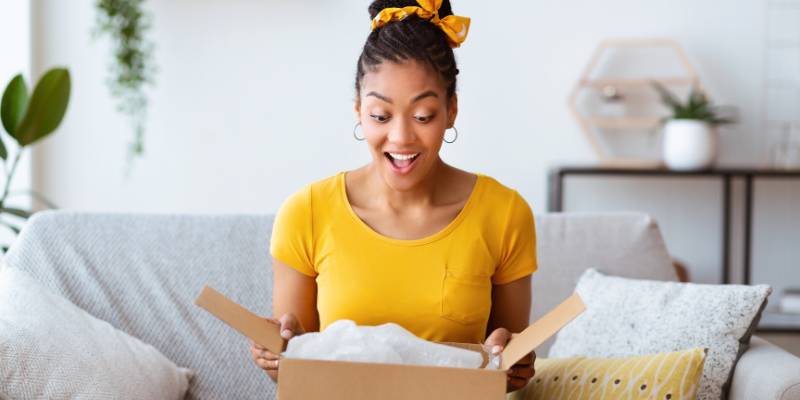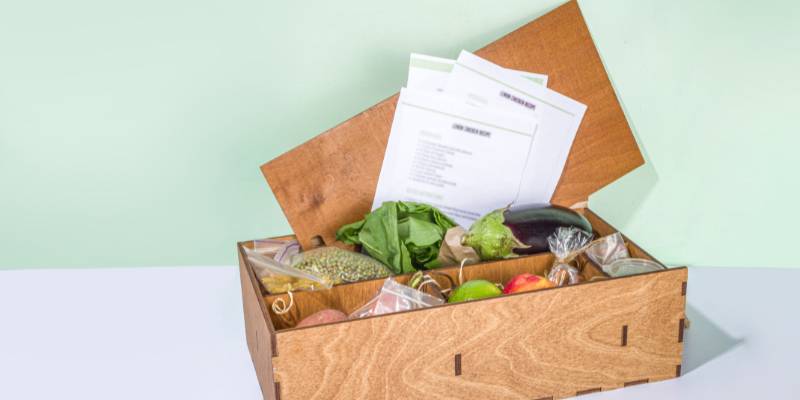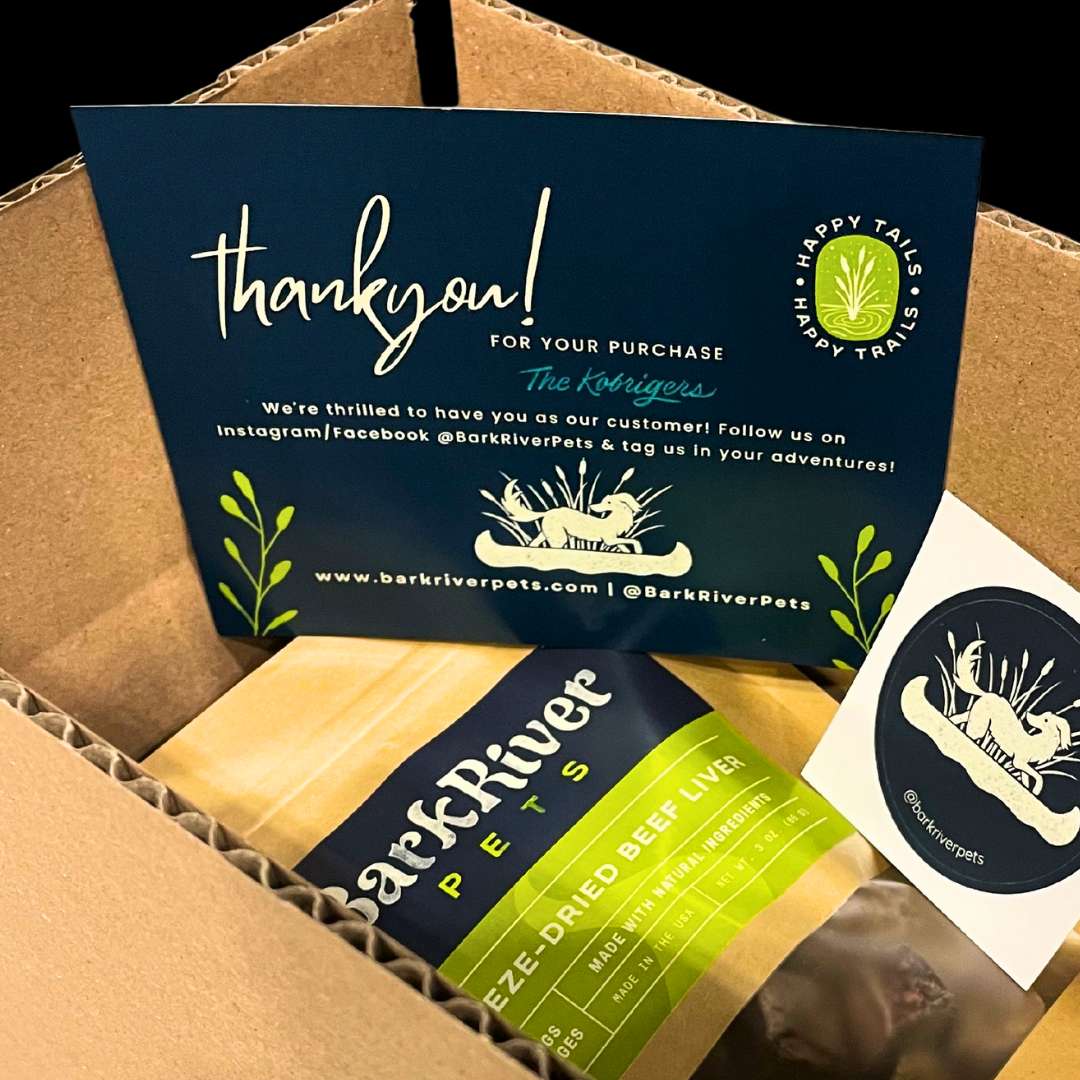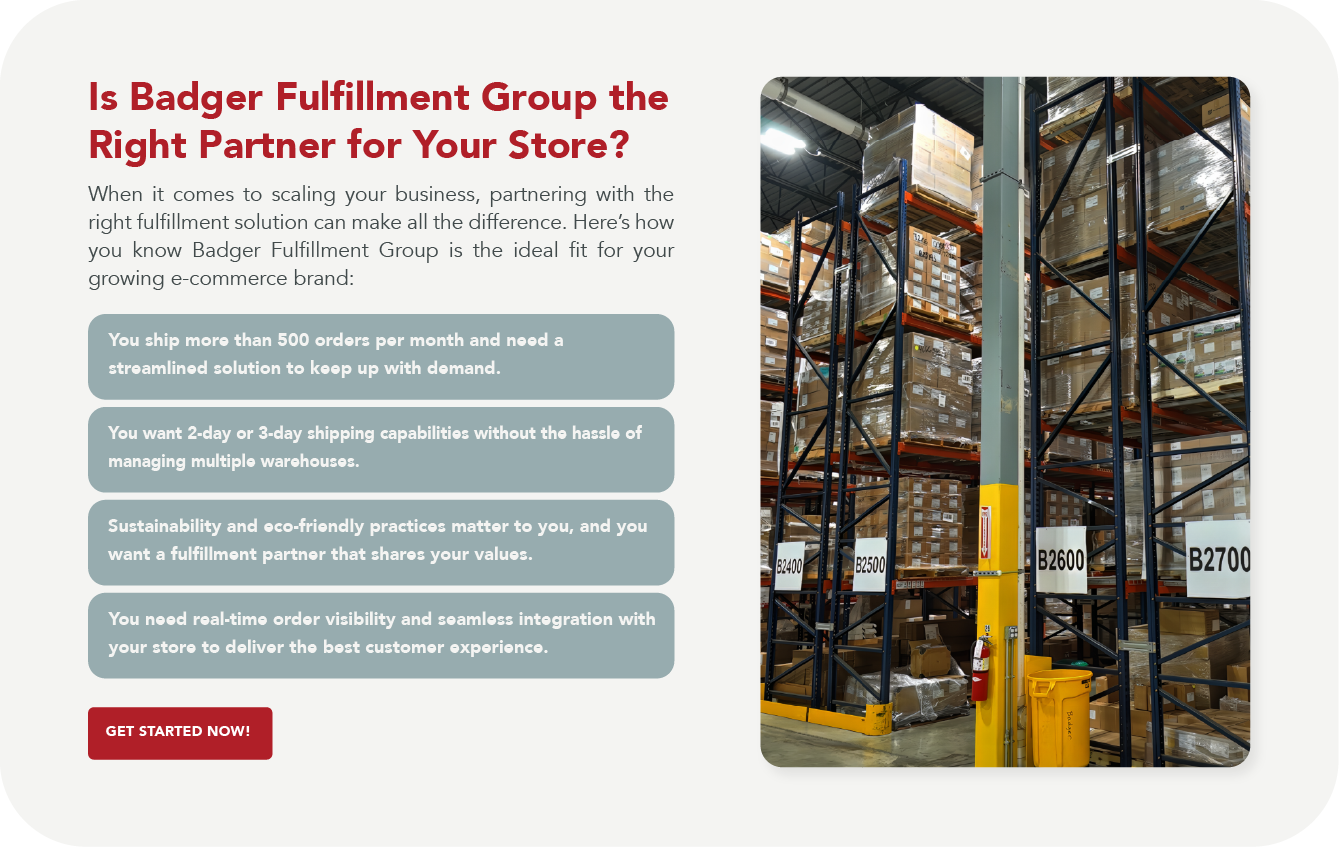In the fiercely competitive world of boutique brands, where every product is a testament to quality, uniqueness, and craftsmanship, staying ahead of the curve is both an art and a science. The market is brimming with innovation, and the customer’s discerning eye can make or break a brand. So, how can boutique brands not only survive but thrive in this dynamic landscape?
One word: Fulfillment.
In an era where the customer experience reigns supreme, the notion of fulfillment has transformed into an integral component of brand identity. It extends far beyond the realm of shipping and delivery, becoming an extension of the customer’s journey with a brand. It’s about making every interaction, every touchpoint, a meaningful and memorable one. While boutique brands often conjure images of exquisite, high-value, small-sized products, their true essence lies in the unique experience they offer.
Personalization in Fulfillment
When it comes to product fulfillment, personalization goes beyond the simple act of addressing a package to the recipient’s name. It’s about curating an entire experience that resonates with the customer on a deep and meaningful level.
Defining Personalization in Fulfillment
Personalization in fulfillment refers to the practice of tailoring the entire customer journey, from the moment an order is placed to its final delivery, to match the individual preferences, needs, and expectations of the customer. It’s about recognizing that each customer is unique and ensuring that their interaction with your brand feels like a one-of-a-kind experience.
Why Personalization Matters for Small-Sized, High-Value Products
Small-sized, high-value items, such as cosmetics, jewelry, and CBD products, are often cherished for their quality, aesthetics, and emotional significance. These products are more than mere commodities; they represent a part of the customer’s identity and lifestyle. As a result, personalized fulfillment holds particular significance for these niche offerings.
- Enhanced Brand Loyalty: When customers receive small, high-value products in a package that reflects their preferences and lifestyle, it deepens the emotional connection with your brand. This, in turn, fosters unwavering brand loyalty.
- Reduced Risk: High-value items often come with high expectations. Personalized fulfillment helps ensure that the customer receives exactly what they desire, reducing the risk of dissatisfaction and returns.
- Valuable Differentiation: In a crowded marketplace, personalization sets your brand apart. It conveys that you understand your customers’ unique needs and are willing to go the extra mile to meet them.
- Memorable Unboxing Experiences: Unboxing a carefully curated and personalized package is an event in itself. It leaves a lasting impression that customers are likely to share with their networks, amplifying your brand’s reach.
In a world where every detail counts, personalized fulfillment isn’t just a luxury; it’s a necessity for boutique brands dealing in small-sized, high-value products. It’s the difference between being another face in the crowd and becoming the go-to choice for discerning customers who seek a personalized and exceptional experience.

Tailoring the Unboxing Experience
Personalization doesn’t stop at the point of purchase; it extends to the very moment a customer opens their eagerly awaited package. The unboxing experience is a treasure trove of opportunities for boutique brands to leave a lasting impression. Personalized packaging is the key to unlocking these opportunities. For cosmetics brands, this could mean including a custom makeup tutorial tailored to the specific products purchased. Imagine the delight of a customer receiving a beautifully packaged set of makeup with a step-by-step guide perfectly matched to their chosen products. It’s not just a product; it’s an experience, and it reinforces the brand’s expertise and commitment to the customer’s success.
Furthermore, offering a small, complimentary sample that caters to the customer’s unique skin type or color preferences is another thoughtful gesture that goes a long way. It demonstrates a deep understanding of the customer’s needs and showcases the brand’s commitment to going above and beyond. These small yet significant touches can turn a routine unboxing into a memorable moment, leaving customers not only satisfied but excited to share their experience with others. In the world of boutique brands, the unboxing experience is an art, and personalization is the paintbrush that brings it to life, elevating brand identity and customer loyalty to new heights.
Crafting Memorable Moments
In the realm of boutique brands, the creation of memorable moments is an art that extends beyond the product itself. It’s about forging an emotional connection with customers that transcends the transaction. The power of storytelling in packaging and notes cannot be underestimated. For instance, a jewelry brand can include a card that narrates the design story or the artisanal background of a piece. It transforms the act of receiving jewelry into a journey of discovery, where each piece has its own unique narrative. This not only adds depth and value to the product but also provides customers with a deeper appreciation for their purchase.
Moreover, the inclusion of a personalized jewelry cleaning guide or the offer of a scheduled virtual consultation for custom pieces takes personalization to the next level. It’s a demonstration of the brand’s commitment to the long-term satisfaction and enjoyment of the product. It empowers customers with the knowledge and support they need to care for and appreciate their jewelry, creating a sense of partnership and trust. Crafting these memorable moments is akin to composing a symphony of brand experiences, where each note resonates with the customer’s heart. In the world of boutique brands, it’s these personal touches that elevate the entire customer journey from ordinary to extraordinary, leaving a lasting imprint and fostering unwavering loyalty.
Education and Information
In the boutique brand universe, the role of education and information extends far beyond the mere transaction. It’s about empowering customers with knowledge, fostering their trust, and enhancing their overall experience. A powerful way to achieve this is by providing personalized instructions, usage guides, or recipes that are tailored to the customer’s purchase history or wellness goals. Consider a scenario involving sports vitamins, power bars, or protein powder. By offering customized guidance based on the specific products a customer has purchased or their unique health objectives, you not only simplify their journey but also become a trusted partner in their wellness journey.
Including access to a short, private consultation or Q&A service with experts for first-time buyers is a strategic move that builds bridges of trust. It provides a valuable resource for those who may be exploring your brand for the first time. They can seek guidance, ask questions, and receive tailored advice, turning the buying process into a collaborative learning experience. By emphasizing education and information in this way, boutique brands transform themselves into sources of not only high-quality products but also expertise, setting a new standard for customer care and engagement. In the ever-evolving landscape of boutique brands, it’s not just what you sell; it’s what you teach and share that truly distinguishes your brand.

Beyond the Box - Follow-up and Feedback
After a customer receives their meticulously personalized package, the next step is to nurture the relationship. This begins with thoughtful follow-up emails that inquire about the customer’s experience with the product. These emails should carry the same personal touches that have characterized the brand’s journey from the start. By addressing the customer by name and referencing their specific purchase, these messages convey a sense of genuine care and interest. It’s not just a transaction; it’s the start of a dialogue between the brand and the customer.
Creating Exclusive Online Communities
To truly transcend the transactional relationship, boutique brands can extend an invitation to exclusive online events or community forums, tailored to enthusiasts in each product category. For example, a cosmetics brand might host makeup masterclasses, a jewelry brand could organize virtual jewelry showcases, or a wellness brand might offer wellness webinars. These events not only deepen the customer’s engagement with the brand but also foster a sense of belonging to a community of like-minded enthusiasts. It’s here that the brand transforms from a mere seller of products to a curator of experiences and a source of knowledge and connection.
By extending personalized, post-purchase engagement and creating exclusive online communities, boutique brands can nurture customer loyalty and transform one-time buyers into lifelong enthusiasts and advocates. In this way, the brand becomes not just a product provider but a partner in the customer’s ongoing journey.
Challenges and Best Practices
While personalizing fulfillment processes offers a myriad of benefits, it also presents unique challenges for boutique brands. This section highlights these potential challenges and offers best practices for navigating the delicate balance between efficiency and personalization.
Challenges in Personalization
- Data Management: Gathering and managing customer data is crucial for personalization. However, this can pose challenges related to data security, privacy regulations, and maintaining accurate records.
- Scalability: As your brand grows, personalizing each order becomes more complex. Balancing personalization with efficiency becomes challenging, especially during high-demand periods.
- Costs: The investment in personalized packaging, notes, and follow-up engagement can strain budgets, and it’s essential to find cost-effective solutions.
Best Practices for Maintaining Efficiency
- Data Privacy Compliance: Ensure compliance with data privacy regulations by clearly communicating how customer data will be used and by implementing robust data security measures.
- Customer Segmentation: Segment your customer base to tailor personalization efforts more effectively. Not every customer will require the same level of personalization, so prioritize where it matters most.
- Automation: Implement automation wherever possible in the fulfillment process. Use technology to streamline data management, personalization efforts, and follow-up communication.
- Consistent Communication: Establish clear communication channels and guidelines for your team to ensure that personalization remains consistent across all customer touch-points.
- Feedback Loop: Continuously gather and analyze customer feedback to refine your personalization efforts. This information can guide future improvements and ensure that personal touches remain meaningful and relevant.
As boutique brands, the challenge is to think creatively and genuinely about how to leave a lasting impression with each delivery. It’s about weaving stories into packaging, tailoring instructions to individual needs, and respecting privacy while adding personal touches. It’s an art form where every detail counts, and where the customer isn’t just a recipient, but a participant in the brand’s narrative.
Additional Helpful Resources
For more insights on enhancing your fulfillment strategy with personalized touches for boutique e-commerce brands, consider these resources:
- Building Trust and Credibility in E-Commerce Through Transparency: Learn how transparency can enhance customer trust, a vital aspect for boutique brands. Read more
- Why Personalized Customer Experiences are Non-Negotiable: Explore strategies for creating personalized customer experiences that can differentiate your brand. Read more
- Shopify – Custom Packaging and Branding Tips 2024: Discover tips on how custom packaging can create memorable unboxing experiences for your customers. Read more
These resources provide valuable insights to help you incorporate personal touches in your fulfillment process, enhancing the overall customer experience for your boutique e-commerce brand.
Yes, personalization can significantly increase sales by improving customer engagement and loyalty. Tailored shopping experiences make customers feel valued, which can lead to repeat purchases and positive word-of-mouth referrals.
Frequently Asked Questions for Packaging and Fulfillment for Boutique Brands
Does personalization in e-commerce increase sales?
Yes, personalization can significantly increase sales by improving customer engagement and loyalty. Tailored shopping experiences make customers feel valued, which can lead to repeat purchases and positive word-of-mouth referrals.
What are the personalization trends for 2024?
For 2024, personalization trends include hyper-targeted product recommendations, personalized packaging, interactive and augmented reality shopping experiences, and using data to create tailored customer journeys across all channels.
How can boutique brands use social media for personalization?
Boutique brands can leverage social media for personalization by using data from social interactions to create targeted ads, developing custom audiences, engaging directly with followers, and sharing user-generated content that resonates with their target demographics.
How important is the unboxing experience? Is it just a trend or here to stay?
The unboxing experience is critical and more than just a trend; it’s become an essential part of the customer journey. With social media, especially platforms like Instagram and TikTok, customers often share their unboxing experiences, making it a lasting impression that can drive brand loyalty and online exposure.
What is the cost range for custom packaging?
Custom packaging costs vary widely depending on materials, design complexity, and order volume. Small runs may start at $1–$3 per box, while more elaborate packaging or eco-friendly materials can increase costs. Consulting with packaging suppliers is key to getting a tailored quote.
What is the most challenging part of e-commerce for boutique brands?
For many boutique brands, building brand awareness in a competitive market, creating a seamless fulfillment process, and managing inventory effectively are some of the biggest challenges. Personalization and quality control also require careful attention to detail.
How can boutique brands incorporate sustainability into personalized packaging?
Sustainable personalization options include using recyclable materials, minimalistic designs that reduce waste, and eco-friendly packaging supplies. Partnering with eco-conscious suppliers can help brands integrate sustainability with personalization.



